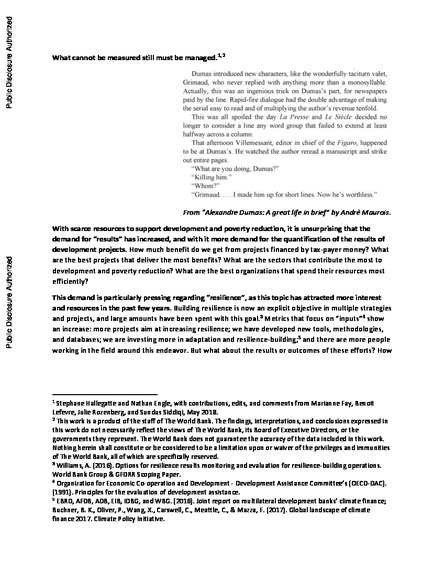
There is increasing demand for demonstrating the "results" of development and poverty reduction activities, and this demand is particularly pressing for projects that are related to the concept of "resilience". This paper seeks to flag the risks of over-relying on imperfect quantified indicators to measure progress and to prioritize future investments for resilience building. Particularly important is the problem of how relying on a universal/quantified resilience indicator – and its inability to measure what we want – may lead to perverse incentives.
The paper pulls from lessons across various sectors typically outside of the resilience-building realm, and guides the reader through several "thought experiments" to identify the desired characteristics development practitioners would want projects to demonstrate. It concludes with recommendations to pursue three complementary approaches to hedge against the risk of a single (imperfect) resilience indicator: a process-based approach to ensure the quality of the portfolio and appropriate outcomes are produced, monitored, and reported; an input-based approach to track changes in the portfolio toward more action on resilience; and a national-level indicator to track the progress of countries over time.